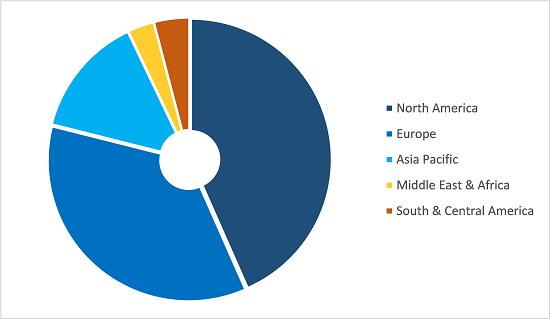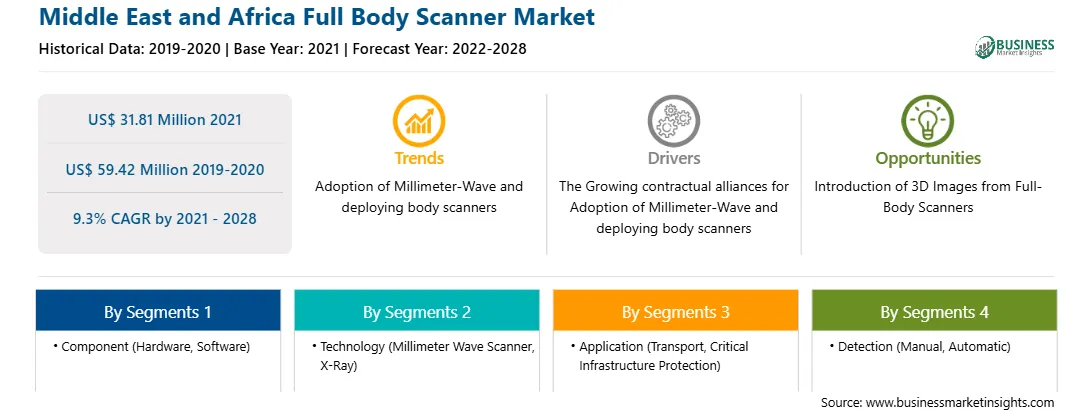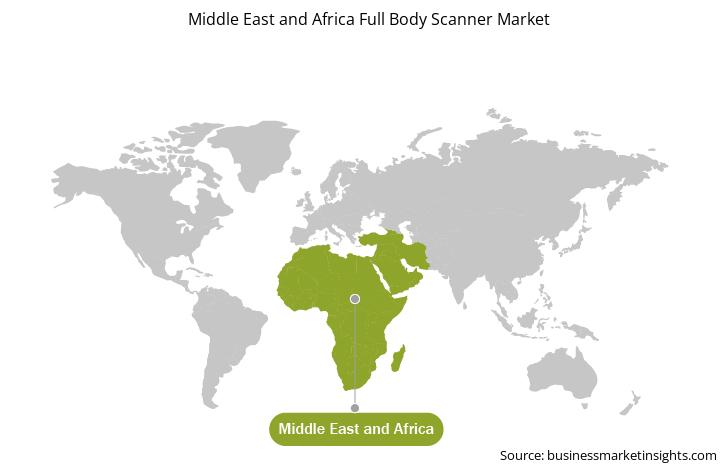Market Introduction
The MEA region includes countries such as South Africa, Saudi Arabia, U.A.E., and rest of MEA. The astonishing growth in its aviation sector is owing to the rising number of passengers and expanding a fleet of airlines, the countries in the Middle East region are significantly investing toward expanding their existing airports and constructing new ones. Some of the ongoing airport expansion projects in the region include Ajman International, UAE; Bahrain International Airport; Al Maktoum International Airport, Dubai; Hamad International, Doha; and Sohar Airport, Oman among others. Also, the Middle East region is experiencing high growth in its construction and infrastructural sector. Middle East countries are significantly getting involved in various global events which are leading to infrastructural development and strengthening of the economy. On the other hand, the rising African population and affordability of air travel, along with the augmented FDI on the continent, expansion of existing airport facilities as well as the construction of new airports is anticipated to accelerate. The aforesaid factors play an essential role in influencing the market demand for full body scanner at commercial and public places. Moreover, the rise in terrorism and border conflicts in the Middle-East and Africa region over the past decade has increased the demand for airport passenger and baggage screening systems in the region and propel the growth of full body scanner market. Additionally, several technologically advanced programs, such as NEXTT (New Experience in Travel and Technology) initiative by IATA and ACI, IATA's One ID project, etc., which aim at creating digital passenger screening and baggage handling systems through the implementation of iris scan, biometric and facial recognition, etc. is propelling the growth of the market. Further, Airports in Middle-East are expected to handle 450 million passengers by 2025, thus creating a need to implement smart technologies such as Artificial Intelligence, Robotics, IoT, etc. for fast, smooth, and efficient screening of passengers which lead to drive the growth pf the full body scanner market.
The COVID-19 pandemic has led to disruptions in national and international supply chains due to the shutdown of country borders, which is adversely affecting the full-body scanner market in the Middle East and Africa (MEA). In 2020, the limited seaborne trade impacted the MEA full-body scanner market due to reduced demands for scanners at the ports. In the pandemic recovery period, the count of travelers in the MEA is anticipated to grow considerably, which is likely to fuel the demand for high-tech body scanners in the coming years.
Strategic insights for the Middle East and Africa Full Body Scanner provides data-driven analysis of the industry landscape, including current trends, key players, and regional nuances. These insights offer actionable recommendations, enabling readers to differentiate themselves from competitors by identifying untapped segments or developing unique value propositions. Leveraging data analytics, these insights help industry players anticipate the market shifts, whether investors, manufacturers, or other stakeholders. A future-oriented perspective is essential, helping stakeholders anticipate market shifts and position themselves for long-term success in this dynamic region. Ultimately, effective strategic insights empower readers to make informed decisions that drive profitability and achieve their business objectives within the market. The geographic scope of the Middle East and Africa Full Body Scanner refers to the specific areas in which a business operates and competes. Understanding local distinctions, such as diverse consumer preferences (e.g., demand for specific plug types or battery backup durations), varying economic conditions, and regulatory environments, is crucial for tailoring strategies to specific markets. Businesses can expand their reach by identifying underserved areas or adapting their offerings to meet local demands. A clear market focus allows for more effective resource allocation, targeted marketing campaigns, and better positioning against local competitors, ultimately driving growth in those targeted areas.
Middle East and Africa Full Body Scanner Strategic Insights

Middle East and Africa Full Body Scanner Report Scope
Report Attribute
Details
Market size in 2021
US$ 31.81 Million
Market Size by 2028
US$ 59.42 Million
Global CAGR (2021 - 2028)
9.3%
Historical Data
2019-2020
Forecast period
2022-2028
Segments Covered
By Component
By Technology
By Application
By Detection
Regions and Countries Covered
Middle East and Africa
Market leaders and key company profiles
Middle East and Africa Full Body Scanner Regional Insights

Market Overview and Dynamics
The MEA full body scanner market is expected to grow from US$ 31.81 million in 2021 to US$ 59.42 million by 2028; it is estimated to grow at a CAGR of 9.3% from 2021 to 2028. With continuous technological developments taking place across the region, body scanner manufacturers are looking forward to using advanced technologies to make scanning safer. The inclination toward using safer technology is encouraging the adoption of millimeter-wave over x-rays. The radiation of millimeter-wave is much safer compared to x-ray radiation on a human body. It is 1/1000th of a mobile phone signal. This fact indicates that millimeter-wave-based scanners are safe for use on individuals. Also, millimeter-wave can penetrate basic barrier materials such as paper, plastic, and cloth and detect concealed contraband inside clothing. Compared to x-ray backscatter imaging, the millimeter-wave imaging is nonionizing, making this technology appropriate for personnel surveillance. Also, millimeter-wave systems can accomplish spatial resolution at millimeter levels while giving good image contrast for inspection of concealed weapons. Also, standoff screening systems, such as innovative terahertz technology, permit real-time imaging of the moving passengers. The scanner receives terahertz waves naturally emitted from the human body from 3–8 meters, away from potential threats. This technology ensures a safe range to react toward any dangers detected. In addition, Terahertz-based scanners allow the real-time screening of passengers walking by for suspicious items like metals, ceramics, plastics, gels, powders, and liquids, concealed under clothing. It also increases throughput to more than 1,000 passengers/hour. Several authorities across the region has decided to start using active and passive millimeter-wave-based body scanners in place of backscatter & full transmission X-ray technologies. Due to frequent exposure of passengers toward X-ray radiation, the Indian government has shown interest in using millimeter-wave-based body scanners. Therefore, innovative body inspection technologies such as millimeter-wave and Terahertz technology are subjected to assist airports in establishing broad and strong security schemes while promoting seamless travel with a remarkable passenger experience, which will drive the MEA full body scanner market in coming years.
Key Market Segments
In terms of component, the hardware segment accounted for the largest share of the MEA full body scanner market in 2020. In terms of technology, the x-ray segment held a larger market share of the MEA full body scanner market in 2020. In terms of application, the transport segment held a larger market share of the MEA full body scanner market in 2020. Further, the automatic segment held a larger share of the MEA full body scanner market based on detection in 2020.
Major Sources and Companies Listed
A few major primary and secondary sources referred to for preparing this report on the MEA full body scanner market are company websites, annual reports, financial reports, national government documents, and statistical database, among others. Major companies listed in the report are 3F Advanced System; Aventura Technologies, Inc.; Leidos; Mistral Solutions Pvt. Ltd.; Nuctech Company Limited; Rohde & Schwarz; Smiths Detection Group Ltd. (Smiths Group plc); and Westminster Group Plc among others.
Reasons to buy report
MEA Full Body Scanner Market Segmentation
MEA Full Body Scanner Market - By Component
MEA Full Body Scanner Market -
By Technology
MEA Full Body Scanner Market -
By Application
MEA Full Body Scanner Market -
By Detection
MEA Full Body Scanner Market - By Country
MEA Full Body Scanner Market - Company Profiles
The Middle East and Africa Full Body Scanner Market is valued at US$ 31.81 Million in 2021, it is projected to reach US$ 59.42 Million by 2028.
As per our report Middle East and Africa Full Body Scanner Market, the market size is valued at US$ 31.81 Million in 2021, projecting it to reach US$ 59.42 Million by 2028. This translates to a CAGR of approximately 9.3% during the forecast period.
The Middle East and Africa Full Body Scanner Market report typically cover these key segments-
The historic period, base year, and forecast period can vary slightly depending on the specific market research report. However, for the Middle East and Africa Full Body Scanner Market report:
The Middle East and Africa Full Body Scanner Market is populated by several key players, each contributing to its growth and innovation. Some of the major players include:
The Middle East and Africa Full Body Scanner Market report is valuable for diverse stakeholders, including:
Essentially, anyone involved in or considering involvement in the Middle East and Africa Full Body Scanner Market value chain can benefit from the information contained in a comprehensive market report.